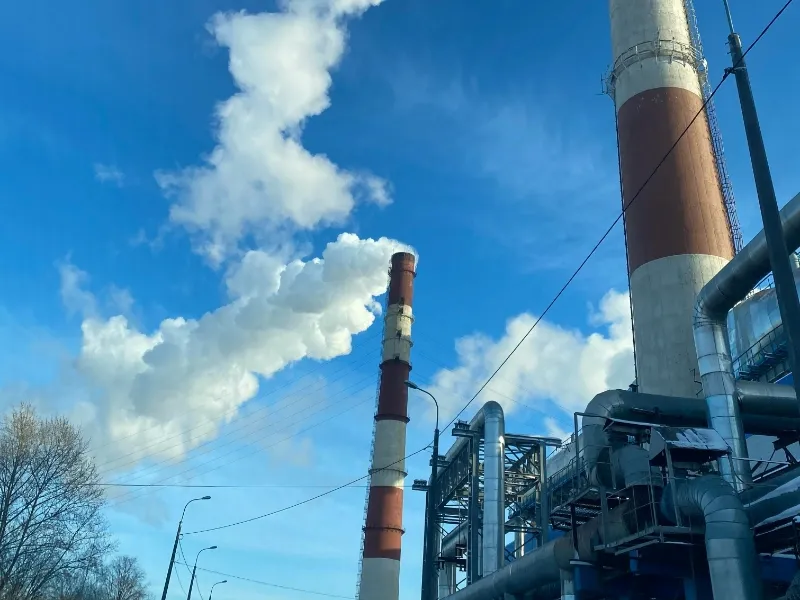- Streaming drives high energy use. Data centres that power streaming services consume vast amounts of electricity, with the increasing demand for high-definition content adding to the strain.
- Cloud storage impacts energy use and e-waste. Storing data requires energy, and the disposal of outdated hardware from data centres contributes to growing e-waste.
Streaming services, cloud storage, and online communication have made us more connected than ever. Yet, as we embrace a fully digital world, we must consider the environmental impact of our online activities. While digital technology offers many conveniences, it also adds significantly to our carbon footprint. The carbon emissions from the internet, streaming, and cloud storage are often overlooked, but they are both substantial and increasing.
Also read: 5 important things to know about your Cloud Carbon Footprint
How streaming contributes to carbon emissions
Streaming has become a dominant part of our daily lives. Whether it’s watching films on Netflix, listening to music on Spotify, or joining virtual meetings on Zoom, streaming demands vast amounts of data transfer worldwide. However, behind every stream lies an energy-intensive infrastructure.
Data centres, the backbone of the streaming industry, store and process the content we access online. These facilities, which house thousands of servers, are major electricity consumers. In fact, according to the International Energy Agency (IEA), data centres account for nearly 1% of global electricity use. Although many tech giants are shifting towards renewable energy for their data centres, the global demand for digital services is still rising. This growth is driven by improvements in streaming quality and increasing demand for high-definition content.
Moreover, transferring data across networks also requires energy. When we stream, our devices send and receive data from distant servers. This involves energy consumption in both data centres and the networks that carry the data. The more we stream, particularly in high-definition or 4K, the more energy is used.
Also read: Carbon trading explained: Top 4 carbon emission exchanges in 2024
The role of cloud storage
Cloud storage has changed how we store and access data, making it easier to keep files, photos, and videos available anywhere. However, like streaming, it relies on large data centres to store and manage the information we upload. The energy required to store, back up, and retrieve data can be substantial.
The environmental impact of cloud storage goes beyond energy use. It also includes the lifecycle of the hardware in these data centres. Servers and storage devices have a limited lifespan. When they are no longer useful, they often become e-waste. Disposing of this waste responsibly is a growing challenge, especially as data volumes increase and demand for cloud services rises.
The hidden costs of digital activities
Cloud storage has changed how we store and access data, making it easier to keep files, photos, and videos available anywhere. However, like streaming, it relies on large data centres to store and manage the information we upload. The energy required to store, back up, and retrieve data can be substantial.
The environmental impact of cloud storage goes beyond energy use. It also includes the lifecycle of the hardware in these data centres. Servers and storage devices have a limited lifespan. When they are no longer useful, they often become e-waste. Disposing of this waste responsibly is a growing challenge, especially as data volumes increase and demand for cloud services rises.
Mitigating the environmental impact
The environmental impact of digital technology is significant, but there are ways to reduce it. Many tech companies, including Google and Microsoft, are investing in renewable energy, with goals to power their data centres entirely by clean sources. However, individual users can also take action to lower their digital carbon footprint.
One effective step is limiting unnecessary streaming and optimising video quality. Watching videos in standard definition, instead of 4K, can cut energy usage by over 50%. Disabling autoplay on streaming platforms can also reduce the number of videos that load automatically.
For cloud storage, regularly cleaning up digital files is helpful. Deleting unused files, images, and emails cuts down on the data that needs processing. Additionally, opting for cloud providers that rely on renewable energy can further lessen your digital impact.
The future of digital sustainability
The digital world is here to stay, and the demand for streaming, cloud storage, and online services will only grow. However, increasing awareness of the environmental impact of digital activities offers hope for a more sustainable future. As technology evolves, so will solutions to reduce its carbon footprint. From energy-efficient data centres and greater use of renewable energy, to more sustainable online habits, both the tech industry and users can help lessen the environmental impact of our connected lives.
Ultimately, understanding and managing the carbon footprint of digital technology is crucial in the fight against climate change. By making informed choices and advocating for greater sustainability in the tech sector, we can ensure our online lives don’t harm the planet.

